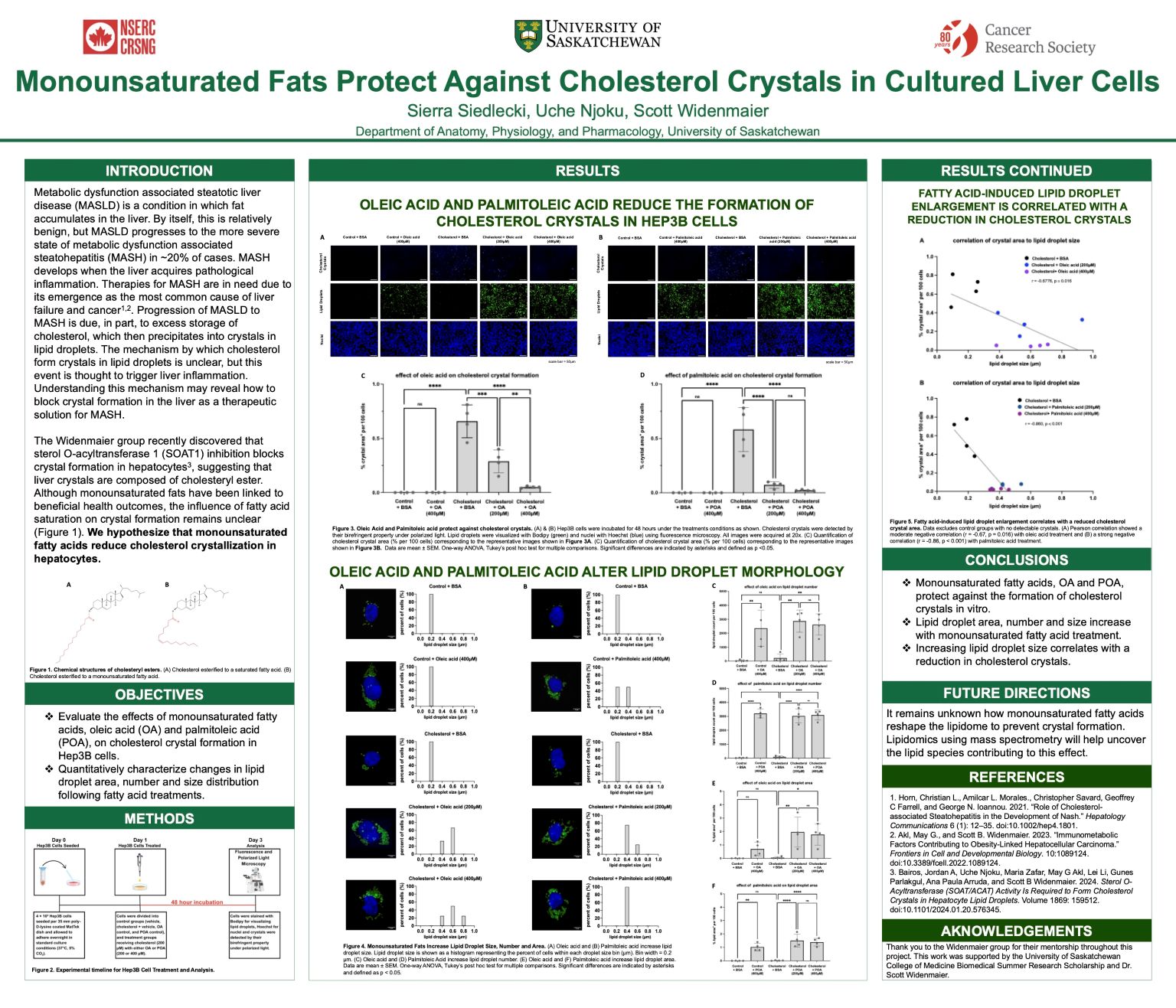
Monounsaturated Fats Protect Against Cholesterol Crystals in Cultured Liver Cells
Sierra Siedlecki
Metabolic dysfunction associated steatotic liver disease (MASLD) involves fat accumulation in the liver and can progress to the more severe state of metabolic dysfunction associated steatohepatitis (MASH). This progression is partly due to excess cholesterol precipitating into crystals, which are thought to trigger liver inflammation. Recent findings in our lab suggest liver crystals are composed of cholesteryl ester. However, the influence of fatty acid saturation on crystal formation remains unclear. We hypothesized that monounsaturated fatty acids reduce cholesterol crystallization in hepatocytes. To investigate, Hep3B cells were incubated for 48 hours following cholesterol loading and treatment with oleic acid or palmitoleic acid. At endpoint, cells were analyzed via fluorescence and polarized light microscopy. Statistical analysis was conducted using GraphPad Prism. Both fatty acids significantly reduced crystal formation and were associated with increased lipid droplet size, area, and number. This expansion of droplets inversely correlated with crystal burden, suggesting that monounsaturated fatty acids promote cholesterol solubilization within droplets and thereby prevent crystal formation. These findings indicate that fatty acid saturation can modulate hepatic cholesterol crystallization, providing a mechanistic basis for the hepatoprotective effects of monounsaturated fatty acid-enriched diets. Additionally, lipid droplet remodelling represents a potential strategy to mitigate cholesterol crystal-driven liver injury.
